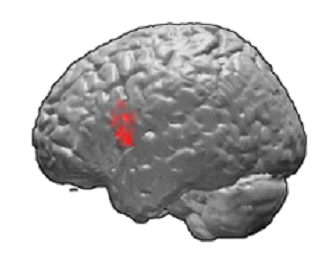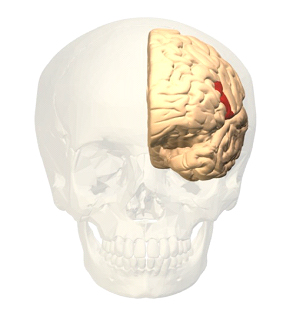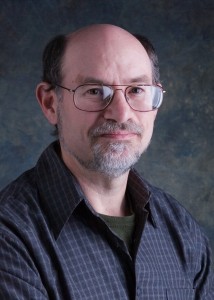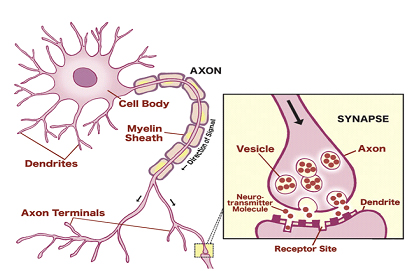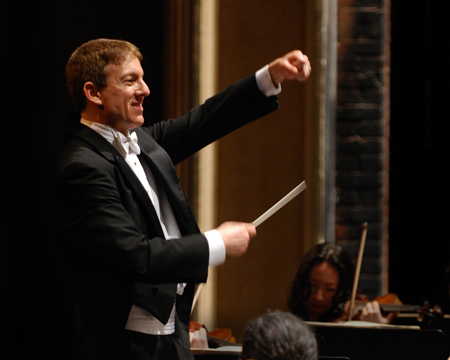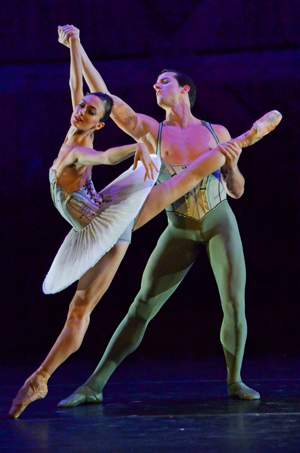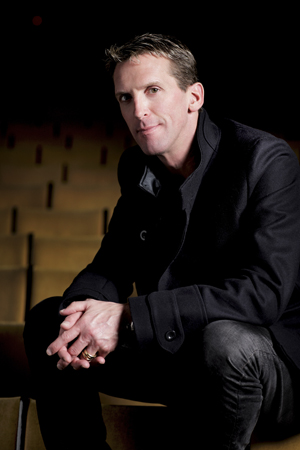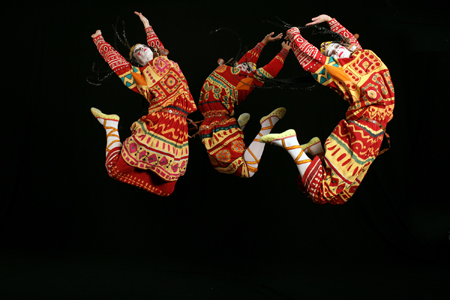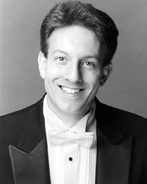
by Scott Speck
This week the Joffrey Ballet embarks on its encore production of Othello: A Dance in Three Acts, with choreograhy by Lar Lubovitch and music by Elliot Goldenthal. This is my favorite ballet to conduct, and for good reason: It’s the greatest full-length ballet of the past 30 years.
The Joffrey’s visionary Artistic Director Ashley Wheater really stuck his neck out when, very early in his tenure, he brought Othello to the Joffrey. As far as anyone in Chicago knew, this was a huge financial risk. This ballet was originally so expensive that it took two companies — American Ballet Theatre and San Francisco Ballet — to co-produce it in 1998. Yet Ashley had no doubts. He knew what an incredible success this would be.
As a conductor at the San Francisco Ballet during the premiere, I had the unforgettable experience of conducting for the original SFB production, together with Emil de Cou (who is now Music Director for Pacific Northwest Ballet). Ashley was Associate Artistic Director at SFB at that time, and we saw how this ballet absolutely electrified audiences, both in San Francisco and on tour at the Opéra Garnier in Paris. Having practically memorized the score at that time, I mourned the end of the San Francisco production, and hoped for a chance to conduct it again someday.
It was Othello that brought me to Chicago. When Ashley boldly programmed the work for the Joffrey Ballet’s 2009-10 season, he invited me to conduct it, and thus began my association with the Joffrey. As Ashley predicted, the production was enormously successful in Chicago — so much so that it is now coming back, three seasons later.
I have conducted hundreds of ballets, and seen hundreds more. Yet if I had to choose one full-length ballet from the past generation, Othello would be the one. Here’s why.
All of the elements are original from the ground up. When Tchaikovsky wrote his score for Sleeping Beauty, he had particular choreography in mind. The music was inextricable from one choreographer’s vision, one costume design, one set design, and one lighting design. And the same goes for Elliot Goldenthal’s music for Othello. It’s a completely new score written for a completely new ballet. How many full-length ballets in the last generation can claim that distinction? I can count them on one hand. And none of them are as ingenious as Othello.
It sustains a mood for two hours. Since I’m a musician, I’ll start with the music. Elliot Goldenthal is the master of mood-setting. From his Fire Water Paper: A Vietnam Oratorio to his scores to Frida, Interview with a Vampire and Batman Forever, he has continuously discovered compelling techniques to keep us on the edge of our seats with anticipation. In Othello, the moods range from deep love and ecstatic frenzy to dread, rage and horror. He pulls us along through the drama, from beginning to end. And the great Lar Lubovitch accomplishes similar wonders, because…
The choreography is unmistakable. If you have ever seen a Lar Lubovitch dance, you know that his style is unique. The shapes that he creates with human bodies are impossible to mistake for the work of anyone else. More importantly, Lar has found a way to tell the story of Othello entirely through gesture. Yes, the dancers portray their roles with intensity and passion, but those are secondary to the moves they make. Lar has discovered a unique shape or momentary pose to communicate each hyper-specific emotion and plot point of the story. It’s not just love or anger — those would be simple enough to portray. It’s the much more complicated sentiments like “I derive erotic pleasure from the thought of ascending to the throne,” or “I submit to your brutality out of a sense of duty,” or “I am devastated by the fact that I now have to murder you.” One gesture is all it takes. And not a hint of ballet mime.
Interestingly, Lar doesn’t really consider himself a ballet choreographer. Though Othello clearly incorporates advanced ballet techniques and could never be performed by anything other than a world-class ballet company, Lar modestly calls it “A Dance in Three Acts.”
(For much more insight into the ingenuity of Lar’s vision, in his own words, please read this terrific recent interview.)
It’s a uniquely integrated work of art. Not only are the costumes, sets, projections and lighting totally in service to the story — as you would expect in any great ballet — but here, the dance is completely in service to the music, and the music in service to the dance.
There’s a reason for this: They were composed at the same time. Once Lar identified Elliot Goldenthal as the perfect composer for this project, he gave Elliot an elaborate “storyboard” to work from. From that point on, the two of them worked simultaneously. Each night Elliot composed a section of the music; and the next morning, he brought it into the studio for Lar to choreograph. If Lar needed more time for a particular dance, he asked Elliot to expand it by a few measures. If he wanted to omit a scene, cuts were made in the music. This is exactly how Peter Tchaikovsky and Marius Petipa collaborated on Sleeping Beauty.
I want to point out one chillingly beautiful example of how well-integrated the elements of this ballet are. At the beginning of Act II, we see a ship come in: it’s Othello, Iago and his men returning from battle. When the ship docks, sailors quickly stretch three thick and heavy ropes all the way across the stage, securing them on the other side. At the same time, another group of three ropes appears onscreen, higher than the original group. Now picture this: While the two groups of ropes are clearly separated, the ropes within each group are tangled and twisted.
Now, if you were to express the concept of three ropes in music, you might use three long notes. And since the ropes are tangled, the notes don’t form a straight line up or down, but instead they create a twisted pattern. You might choose one long note — say F, followed by the closest possible higher note, G-flat, followed by the note that’s lower than the first, yet as close as possible, E. There you have it: three twisted ropes.
Now to describe the second, higher set of ropes in music, you might do the same thing, but higher up. Those three notes would be C, D-flat, and B.
Elliot Goldenthal’s music to Act II of Othello is completely based on these two groups of three twisted notes each: F, G-flat, E, followed by C, D-flat, B. Not only do they appear as long tones, describing the ropes themselves — but these notes are also the basis of an enormous, breathless, thousand-measure-long tarantella which makes up the entire second act.
Why would Elliot Goldenthal choose the ropes, of all things, to depict in music? As Act II progresses, this becomes clear: the ropes are a visual depiction of the story. As Othello becomes increasingly deceived by Iago, more and more tangled ropes gradually appear in the background, until they form a literal web of lies. And simultaneously, the music becomes increasingly complex, dissonant, and twisted.
It’s compelling to all audiences. When Othello first played in Chicago three and a half years ago, word spread fast. This was not your typical girls-in-tutus type of ballet. It was searing, electrifying, and sometimes brutal. People who never saw a ballet in their lives flocked to watch Othello, and I’m sure that will happen again.
Othello appeals to our modern sensibilities more than any other ballet I know. It’s an ancient story that pre-dates Shakespeare, but it’s told in a way that we can immediately identify with. Without sacrificing quality, line or technique, it takes ballet off the pedestal and brings it to the people.
If you are anywhere near Chicago, don’t miss this production. And if you get a chance, please steal a glance at the orchestra pit, where the Chicago Philharmonic and I will be having the time of our lives with a modern masterpiece. Did I mention that this is the greatest ballet of the last 30 years?
—
Scott Speck is Music Director of the Joffrey Ballet, Mobile (AL) Symphony, West Michigan Symphony and Washington Ballet, and the newly designated Artistic Director of the Chicago Philharmonic. His books Classical Music for Dummies, Opera for Dummies and Ballet for Dummies have been translated into dozens of languages and reached a worldwide audience.






